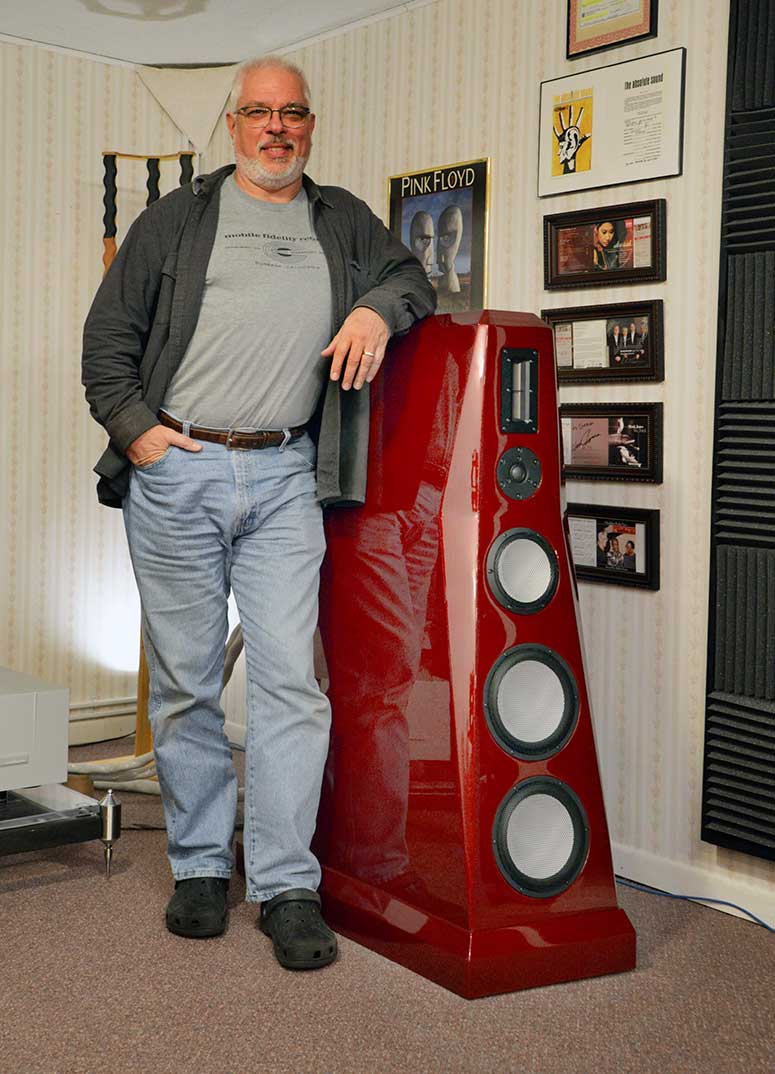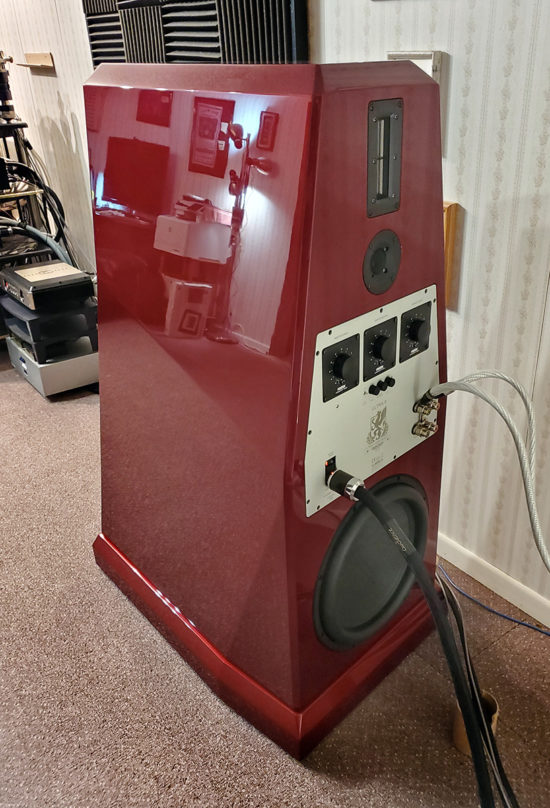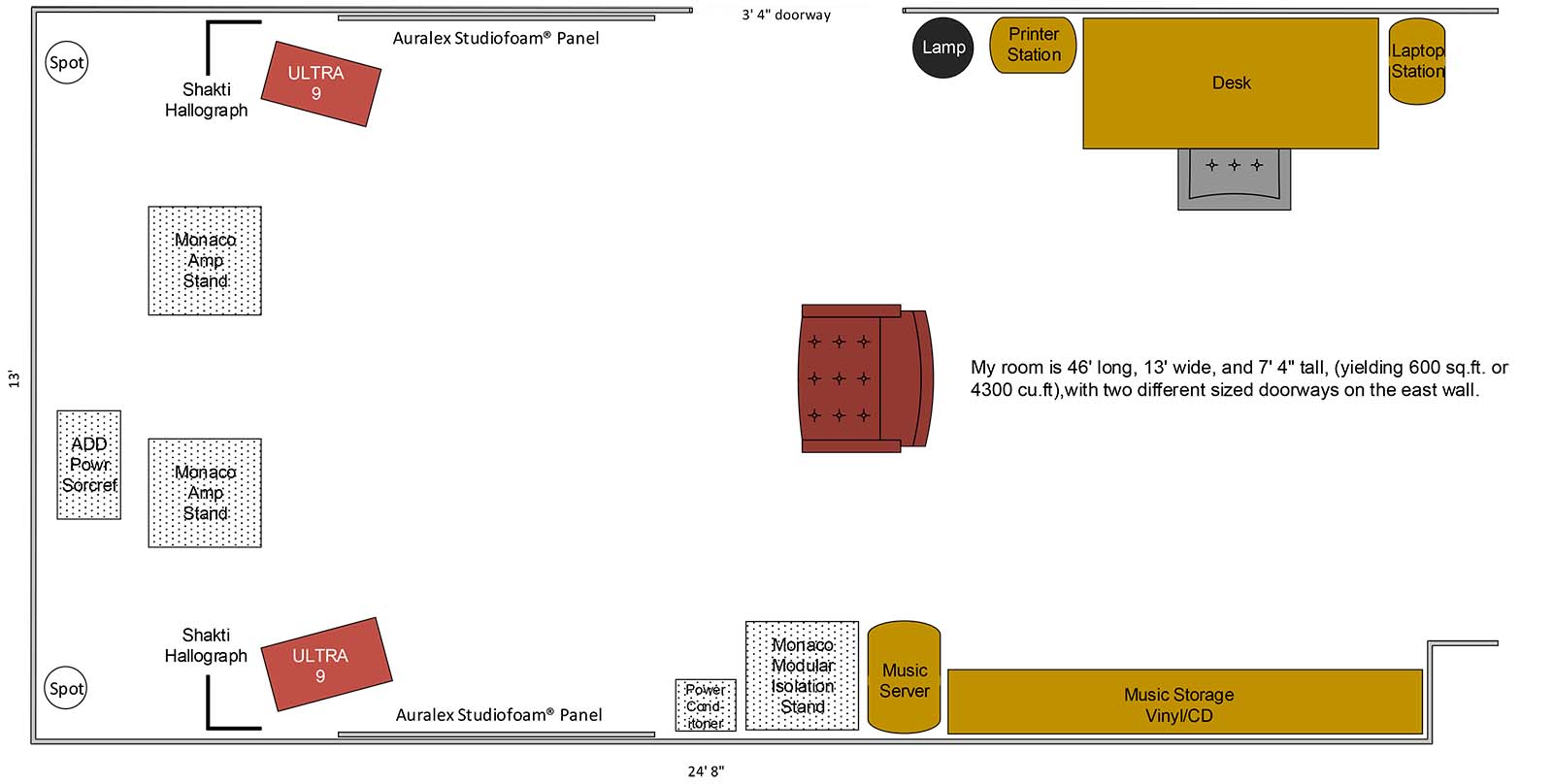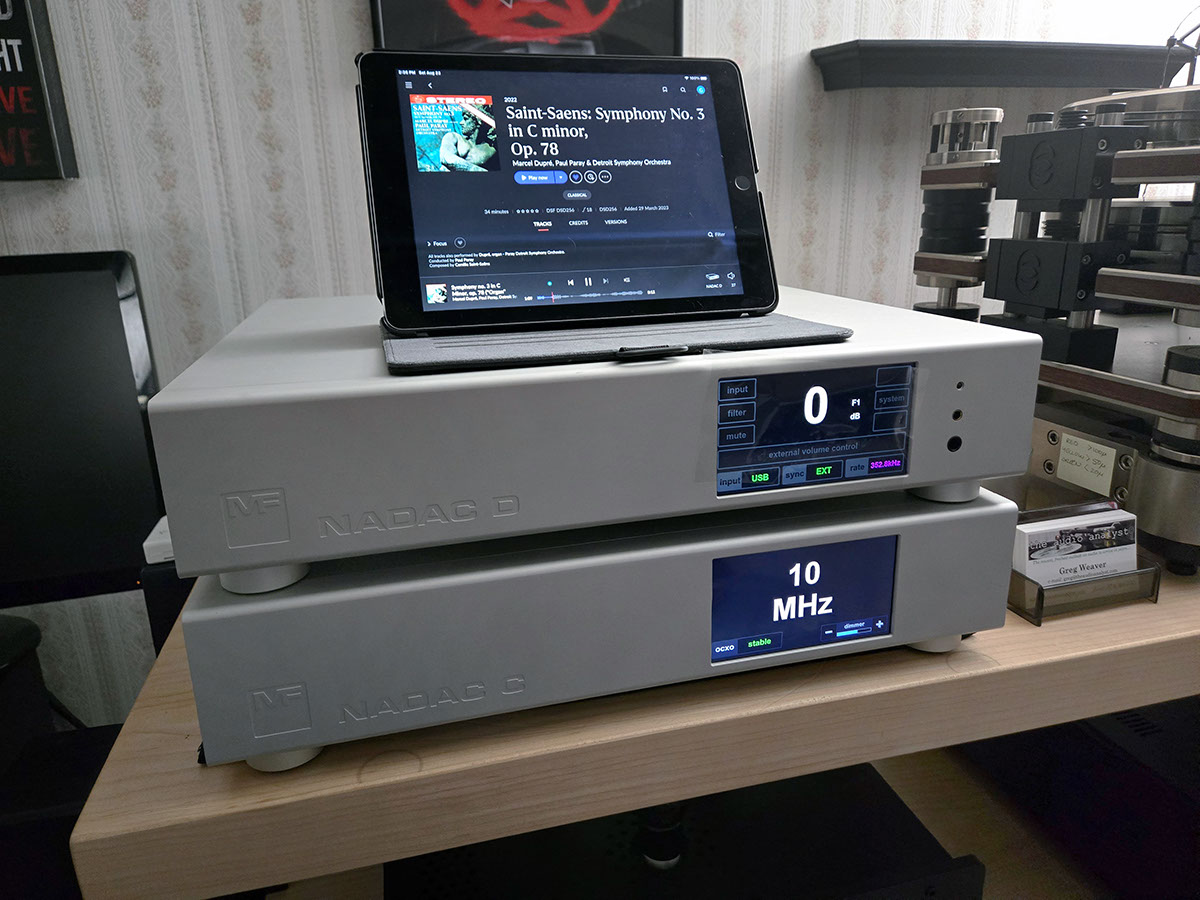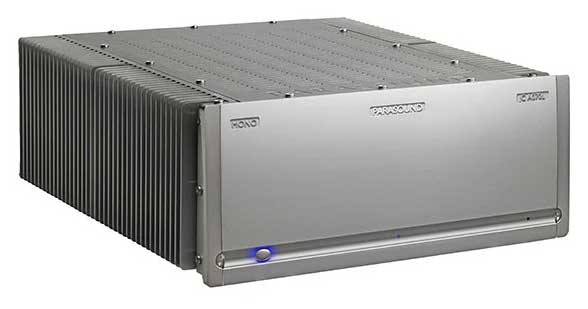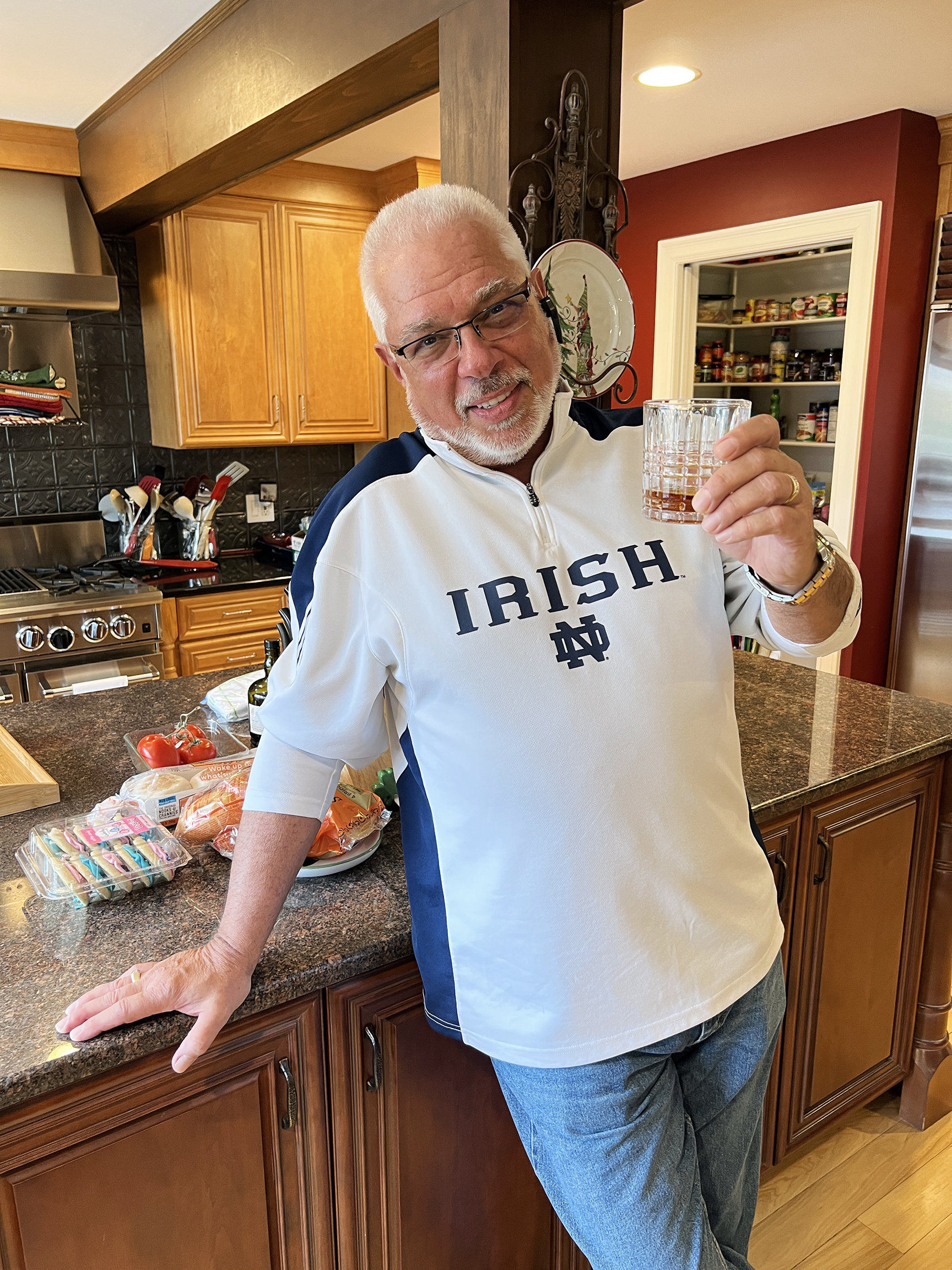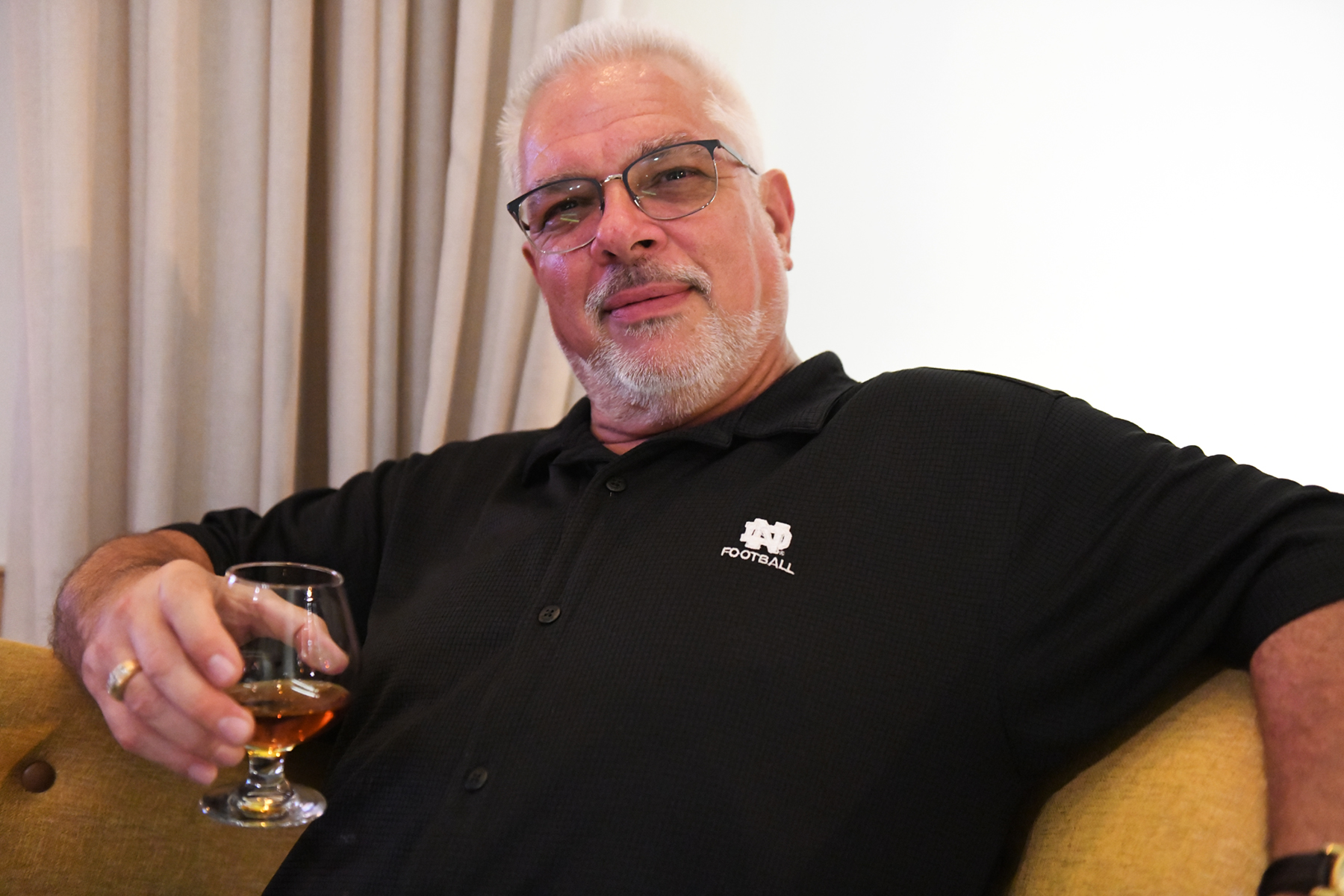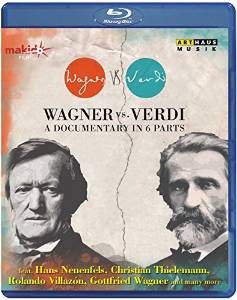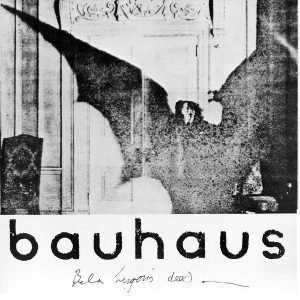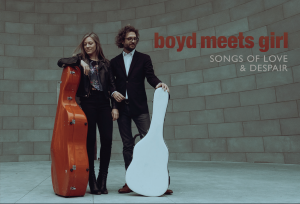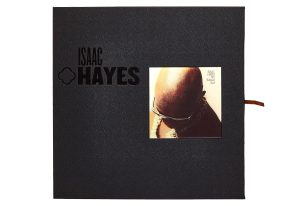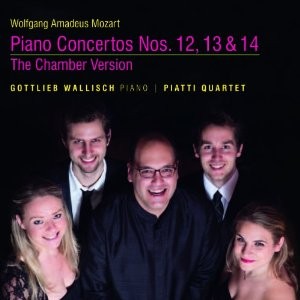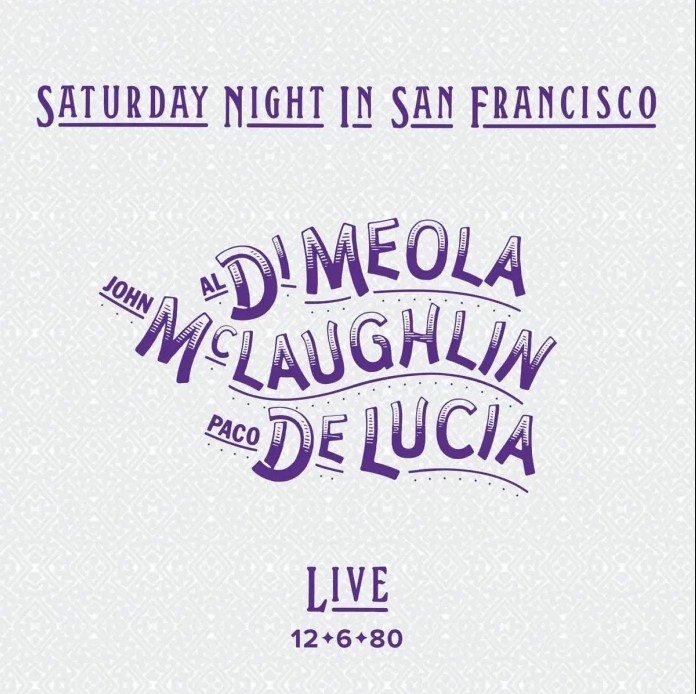
I can’t imagine that there are too many readers of this journal who will not be familiar with, or at least aware of, the renowned 1981 landmark guitar trio release, Friday Night in San Francisco. Treasured by music lovers and audiophiles alike, jazz author and critic Walter Kolosky has proclaimed it “…the most influential of all live acoustic guitar albums," and with good cause.
This record of the meeting of three of the most accomplished and respected guitarists in the world, Al Di Meola, John McLaughlin, and Paco De Lucia, captured an acoustic guitar performance the likes of which many have argued would never be equaled or experienced again. Chronicled by three different duos and two trio performances from Friday, January 5th, 1980 at the Warfield Theater off Market Street in San Francisco’s Tenderloin District, Friday Night In San Francisco portrays each of these three towering players at or near the pinnacle of their quite formidable capabilities.
 Well, I’m only too happy to introduce you to a simply marvelous new release from Impex Records, fittingly called, Saturday Night In San Francisco. My take on this release as shared here is based on my experience with the twelve-inch 33 1/3 RPM Impex 180 Gram LP pressed at RTI as it sounds played in my reference system (HERE). I simply must add that the final mastering and tube-driven lathe lacquer was cut by the renowned Bernie Grundman.
Well, I’m only too happy to introduce you to a simply marvelous new release from Impex Records, fittingly called, Saturday Night In San Francisco. My take on this release as shared here is based on my experience with the twelve-inch 33 1/3 RPM Impex 180 Gram LP pressed at RTI as it sounds played in my reference system (HERE). I simply must add that the final mastering and tube-driven lathe lacquer was cut by the renowned Bernie Grundman.
Now, the story behind how this magnificent recording came to see the light of day is best related in a short film produced by Impex and their partners called, Discovering Saturday Night In San Francisco, which may be seen on the Elusive Disc YouTube Channel (HERE). More diverse companion information may be seen on my own YouTube channel (HERE), including interviews I did with Maestro Al Di Meola (HERE) and Impex founder, Abey Fonn (HERE). And our own Tom Gibbs shares his experience (HERE) as well.
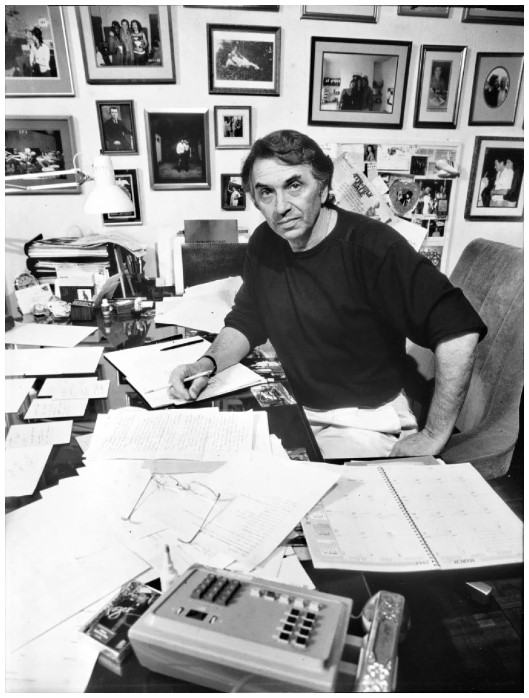 Side one opens with a welcome by the late Bill Graham, owner and impresario of the original Fillmore (and later, the Fillmore West) in San Francisco, and the Fillmore East, on Second Ave. in the East Village of NYC. Its inclusion here was considered essential to Al, as Bill Graham had such a huge influence and impact on Al. And as his intro fades, after just some 30 seconds, it spills directly into the trio playing a superb and frenetic exchange.
Side one opens with a welcome by the late Bill Graham, owner and impresario of the original Fillmore (and later, the Fillmore West) in San Francisco, and the Fillmore East, on Second Ave. in the East Village of NYC. Its inclusion here was considered essential to Al, as Bill Graham had such a huge influence and impact on Al. And as his intro fades, after just some 30 seconds, it spills directly into the trio playing a superb and frenetic exchange.
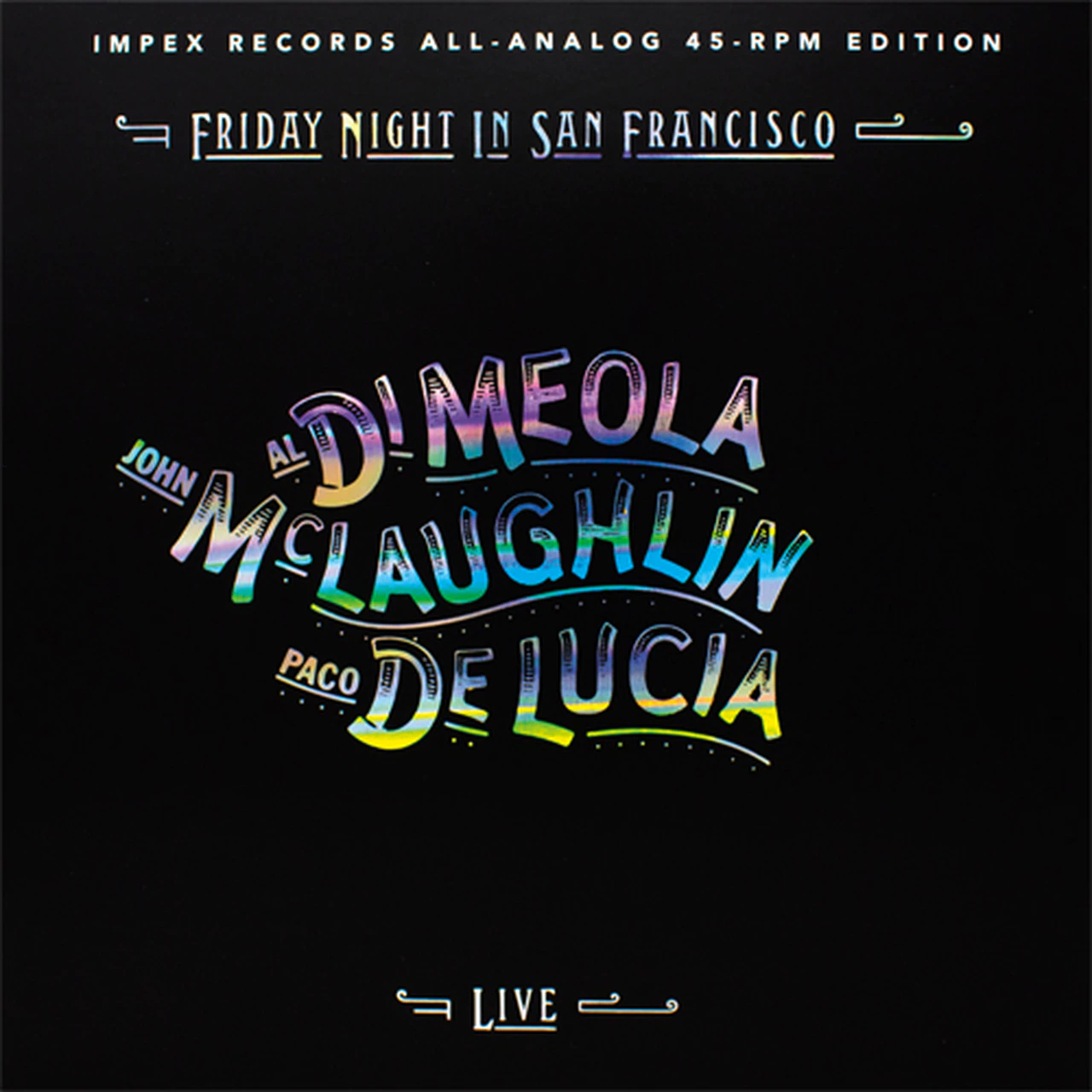 Where the Friday Night... LP opens with Al’s “Mediterranean Sundance,” originally from his 1977 sophomore solo release, Elegant Gypsy, and is blended as a medley with Paco’s Rio Ancho, from his 1976 album Almoraima, Saturday Night... opens with a momentary flash of familiarity to the original Friday Night... LP, one that quickly teases, then pleases, by racing off into an astonishing interpretation of “Splendido Sundance,” composed by Al and released on his 1980 Splendido Hotel release.
Where the Friday Night... LP opens with Al’s “Mediterranean Sundance,” originally from his 1977 sophomore solo release, Elegant Gypsy, and is blended as a medley with Paco’s Rio Ancho, from his 1976 album Almoraima, Saturday Night... opens with a momentary flash of familiarity to the original Friday Night... LP, one that quickly teases, then pleases, by racing off into an astonishing interpretation of “Splendido Sundance,” composed by Al and released on his 1980 Splendido Hotel release.
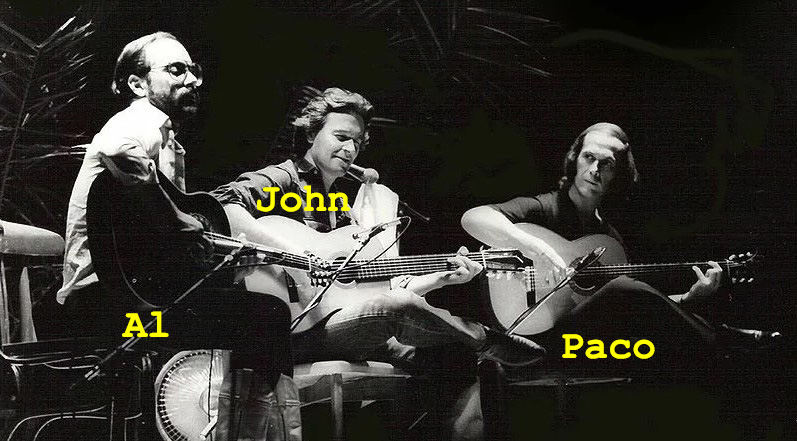 Here we are introduced to Paco de Lucía, to the left of the soundstage, playing his legendary 1971 steel-stringed flamenco guitar, built by Sobrinos de Domingo Esteso, John McLaughlin in the center playing what my research found to be a steel-stringed Ovation (or custom Wechter?), and Al Di Meola to the right playing what he shared with me, during our interview in my Episode 76, was a steel-stringed Ovation.
Here we are introduced to Paco de Lucía, to the left of the soundstage, playing his legendary 1971 steel-stringed flamenco guitar, built by Sobrinos de Domingo Esteso, John McLaughlin in the center playing what my research found to be a steel-stringed Ovation (or custom Wechter?), and Al Di Meola to the right playing what he shared with me, during our interview in my Episode 76, was a steel-stringed Ovation.
Not only does this cut drive you headlong into the remarkable display of the trio’s almost unbelievable precision and reactivity, fueled by their respectful, exacting interplay amongst these three cats, but it also gives you your first savory taste of what a spectacular sonic indulgence this LP delivers throughout.
 Next up, cut two offers the first solo on side one, with John McLaughlin center stage playing his composition “One Word,” which he recorded with the Mahavishnu Orchestra on their 1973 Birds of Fire release. This track clearly exemplifies why he had become so highly regarded, demonstrating his abilities as a pioneer of jazz fusion who had chosen to incorporate elements of jazz with rock, world music, Indian classical music, Western classical music, flamenco, and even the blues. And as you can tell from the audience's overwhelming response, the crowd LOVED it.
Next up, cut two offers the first solo on side one, with John McLaughlin center stage playing his composition “One Word,” which he recorded with the Mahavishnu Orchestra on their 1973 Birds of Fire release. This track clearly exemplifies why he had become so highly regarded, demonstrating his abilities as a pioneer of jazz fusion who had chosen to incorporate elements of jazz with rock, world music, Indian classical music, Western classical music, flamenco, and even the blues. And as you can tell from the audience's overwhelming response, the crowd LOVED it.
 Next up to solo, the maestro of jazz fusion and world music himself, Al Di Meola. Captured sitting to the right, this track finds him delivering his “Trilogy Suite,” which allows him to soar and patently show off his chops. Showcasing his mastery on his Ovation, from picking to strumming, and delivering his special brand of perfection, mixing it all up with slight slides and legato, achieving some beautiful harmonics and tonality, while making it all look and sound like no big deal.
Next up to solo, the maestro of jazz fusion and world music himself, Al Di Meola. Captured sitting to the right, this track finds him delivering his “Trilogy Suite,” which allows him to soar and patently show off his chops. Showcasing his mastery on his Ovation, from picking to strumming, and delivering his special brand of perfection, mixing it all up with slight slides and legato, achieving some beautiful harmonics and tonality, while making it all look and sound like no big deal.
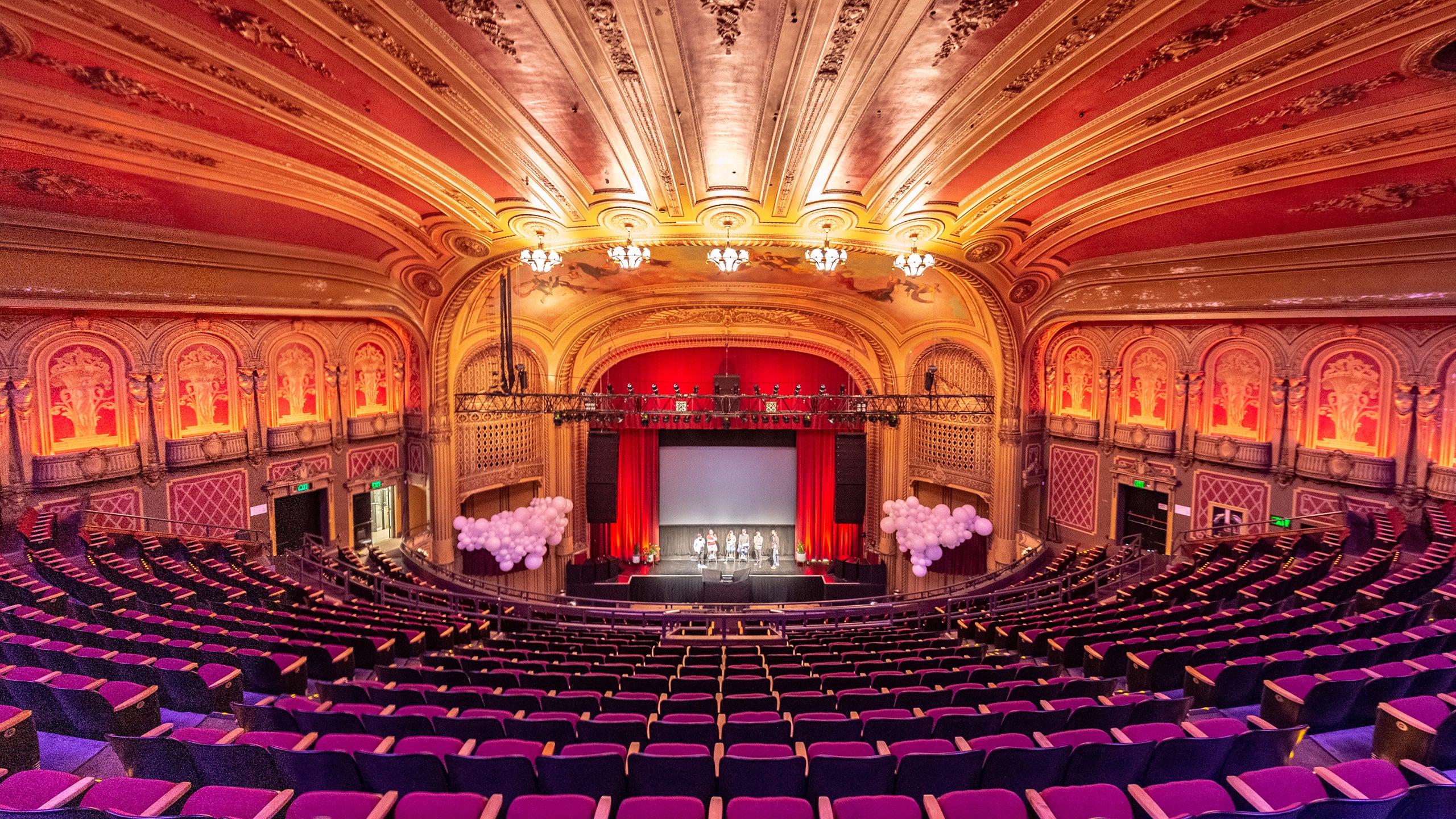 Then, just when the Warfield audience thinks this demonstration of his mastery and accomplishment on his instrument is finished, he slowly and quietly starts back into another pass, only to astonish them with a masterful conclusion. Listen to how clearly you can differentiate between his intricate and articulate picking and his powerfully strummed and lush-sounding chord progressions throughout this stunning solo.
Then, just when the Warfield audience thinks this demonstration of his mastery and accomplishment on his instrument is finished, he slowly and quietly starts back into another pass, only to astonish them with a masterful conclusion. Listen to how clearly you can differentiate between his intricate and articulate picking and his powerfully strummed and lush-sounding chord progressions throughout this stunning solo.
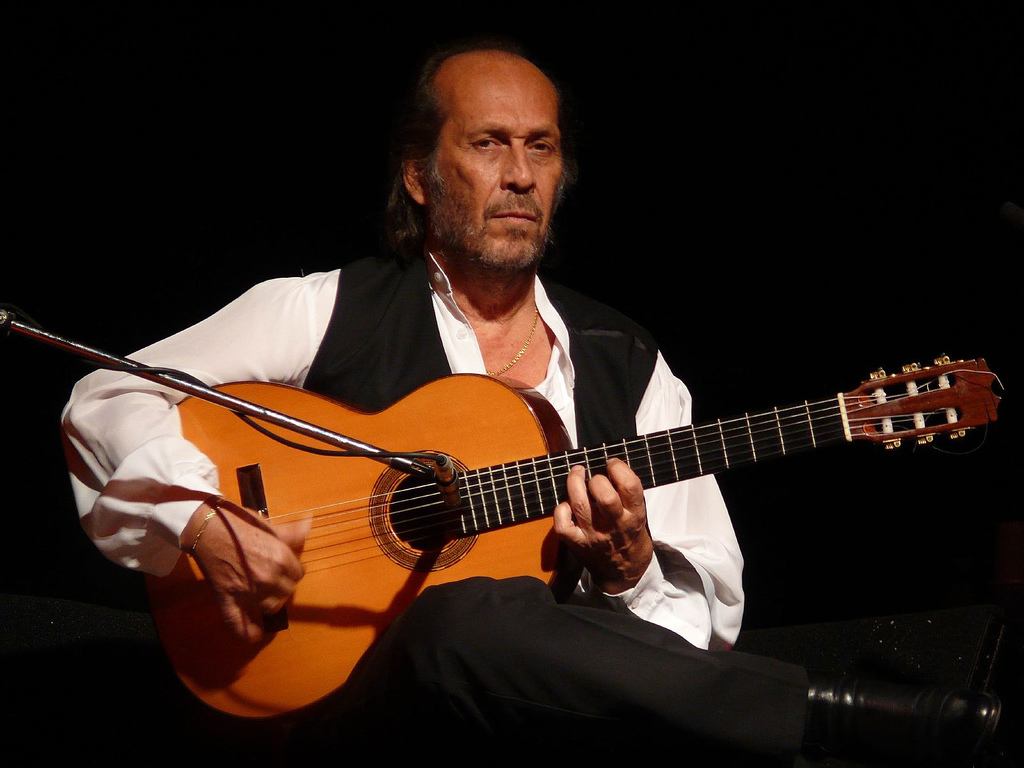 For the last track and solo on side one, the Spanish flamenco master Paco De Lucia, one of the leading proponents of the new flamenco style and among the first flamenco guitarists to branch into classical and jazz, slides into his comfort zone. Sitting to the left, he delivers his mesmerizing performance of “Monasterio de Sal,” first released on his 1981 record Solo Quiero Caminar.
For the last track and solo on side one, the Spanish flamenco master Paco De Lucia, one of the leading proponents of the new flamenco style and among the first flamenco guitarists to branch into classical and jazz, slides into his comfort zone. Sitting to the left, he delivers his mesmerizing performance of “Monasterio de Sal,” first released on his 1981 record Solo Quiero Caminar.
While he wows the crowd with his remarkable technique and distinctive style, listen for, and revel in, how much more he leans into the overall tonality and texture his particular approach routinely delivers from his instrument. The tonal color, character, and texture of his performance overshadow his blistering, distinctive flourishes, spotlighting just a part of what made him such a formidable talent and justified his presence on that stage both nights.
This remarkably colorful set closes out side one, and while clearly highlighting the individual talents and extraordinary proficiencies of each of these guitar virtuosos, also has shown a bit of light on each man’s individual capabilities AND preferential approaches to how he chooses to create music with his instrument.

Side two of this new LP gives us a look into the way these three gifted musicians are able to feel, sense, react, and interrelate with one another with two powerful pieces.
The first cut on side two features an arrangement of Paco De Lucia’s “El Pañuelo.” All three men come out of the gate with a rhythmic and coordinated percussive rapping and tapping on the bodies of their three instruments, when John, followed immediately by Paco, bursts into delicious play while Al spends a bit longer as the timekeeper. But once this magnificent trio takes to their strings here, as all three meld into their reactive playing with each other, as you marvel at their interactivity, be sure to listen to the superbly depicted tonality and the sense of space "of," and "around," each instrument that was captured by this recording.
As the track closes, we get yet another view into the inventive playfulness and intimate interplay among the three men, not only trying to outplay each other, but having what I would presume to be the time of their lives doing so.
Al told me during our interview that, given the timing restrictions for the vinyl release, this superbly arranged eight-minute track had been carefully and concisely trimmed from its original twenty-four-minute running length. While I’d be very interested to hear the entire take, I have to say this edit is both powerful and utterly captivating as presented here.
Closing side two is one of the strongest performances on either of these two companion records separated by over four decades. I was completely drawn into the remarkably fluid and dynamic interplay between these masters with a haunting and expansive take on John’s composition, “Meeting of the Spirits.”
As freely arranged as this cut is, it is also the closest we get to the Flamenco style, to which all three artists pay tribute. Yet there is something unexplainably magical about this cut and its masterful sense of rambling and focus - at the same time, as it changes from picking, to strumming, to body knocking, to synchronized play. Such a compellingly powerful way to close out this modern masterpiece.
It becomes quite clear as to why the audience is so appreciative - and reactive - to these superb performances. There would seem to be little chance that we may ever hope to experience such focused talent, gifted performance, and skilled interplay on any stage any time again.
With the release of Saturday Night In San Francisco, we as music lovers and audiophiles should consider ourselves so very fortunate to have been given yet another chance to revisit the remarkable summit of performances from the stellar trio who gave us Friday Night In San Francisco some forty-two years ago, as 1980 wound to a close. Such second-takes simply don’t come along. And even when or if they do, they rarely enjoy such remarkable treatment.
It should come as no surprise that a considerable contribution to the magic captured by both Friday… and now, Saturday Night In San Francisco, was a result of the culmination of the intensity and earnestness of these artists' efforts over the entire two-month period before both these events. Al has shared that the two-month interval immediately prior to these two recordings consisted of lengthy days playing, eating, rehearsing, traveling, playing cards, drinking, and sharing nearly every waking moment.
In a now-forgotten time before the incessant distractions and interruptions brought on by the internet and cell phones, they had taken the time and inclination to become so in sync with each other, so in tune with each other’s style and manner of play, so familiar with each other’s instinctual and nuanced expressiveness, that it allowed arguably the three most accomplished acoustic guitarist to have ever shared a stage to perform at the pinnacle of their capabilities, delivering one of, if not the, finest acoustic guitar recordings of the ages. And with the release of Saturday Night in San Francisco, we just had an otherwise unexpected and equally exemplary part two of that extraordinary experience dropped into our laps!
As you take in this long-past-due companion release, Saturday Night in San Francisco, the only thing that may be as exciting as reveling in the exceptional measure of the trio’s meticulous interplay is that you will also simply not be able to ignore the sonic knockout this release represents. This recording in general, and this LP in particular, clearly demonstrates what heights may be achieved when the time and proper resources, fueled by passion, dedication, and talent, are all focused on the goal of creating the finest record possible. Sonically, this is yet another grand slam home run for the entire Impex Team. The result is a recording you are likely to reach for to routinely demonstrate how authentically your music system can regenerate and recreate the live music experience!
 It is so exceptional sounding on its own, and so very closely approaches the otherwise unequaled tonality, ambiance, vibe, feel, and sense of the audience involvement so wonderfully portrayed on the superlative Impex Records double 45 RPM reissue of Friday Night in San Francisco, that I have nominated it for the prestigious Los Angeles and Orange County’s “Audiophile Recording of the Year” award for 2022. It is a musical triumph that only took forty-two years to realize!
It is so exceptional sounding on its own, and so very closely approaches the otherwise unequaled tonality, ambiance, vibe, feel, and sense of the audience involvement so wonderfully portrayed on the superlative Impex Records double 45 RPM reissue of Friday Night in San Francisco, that I have nominated it for the prestigious Los Angeles and Orange County’s “Audiophile Recording of the Year” award for 2022. It is a musical triumph that only took forty-two years to realize!
To be allowed to celebrate and witness even more of the grandeur and magic that this exceptional trio attained some forty-two years ago - this long after the original “Friday Night…” release - is a gift of time travel that rarely, if ever, occurs.
Put bluntly, this is an extraordinary recording, both in its rarely-if-ever-equaled performance and its remarkable degree of sonic fidelity. Most enthusiastically recommended.






